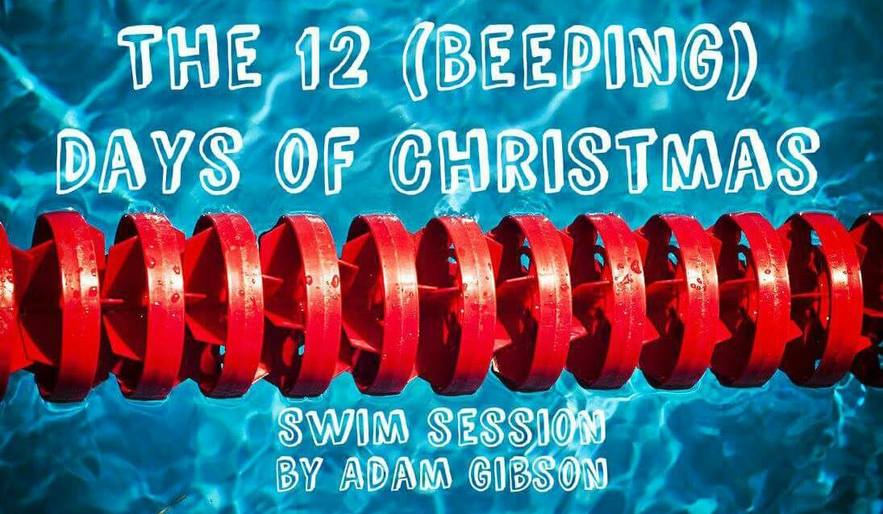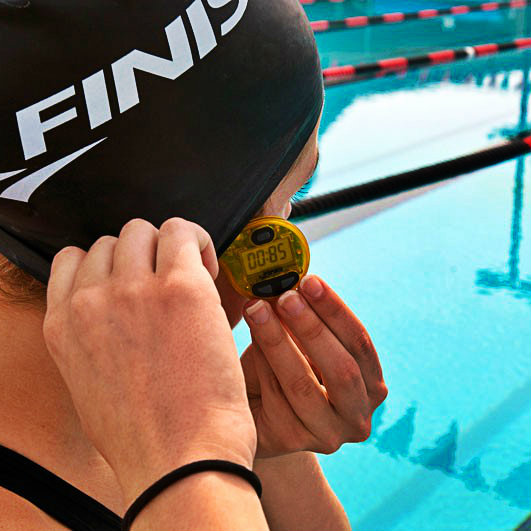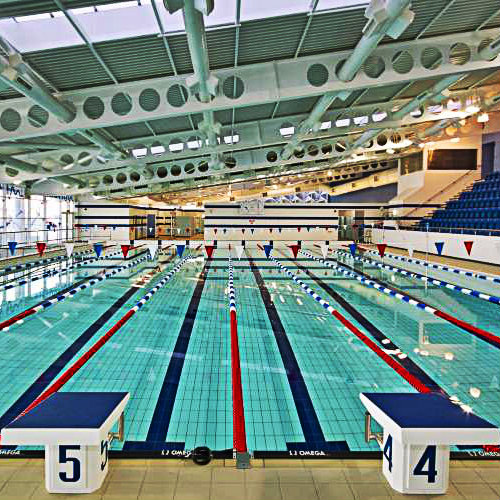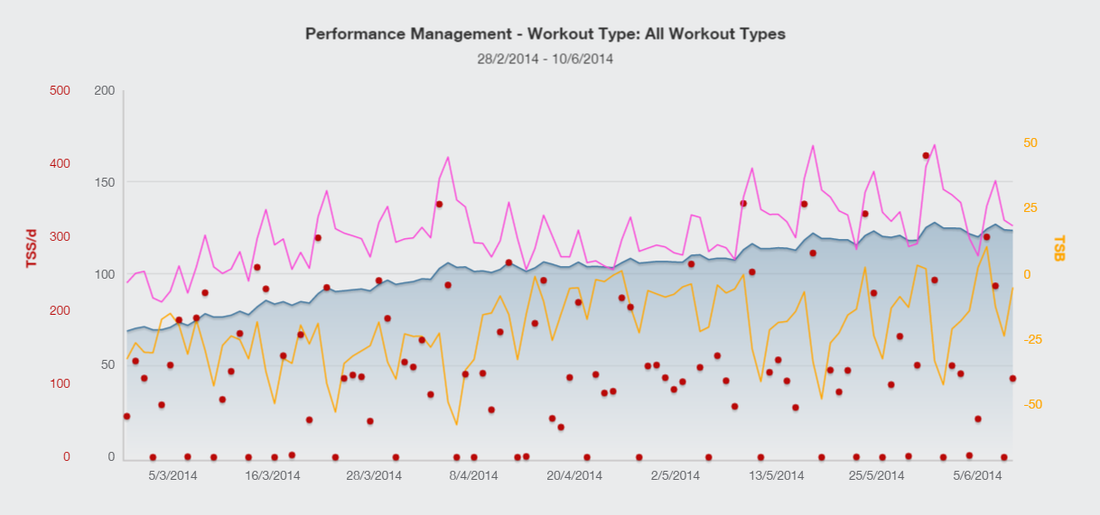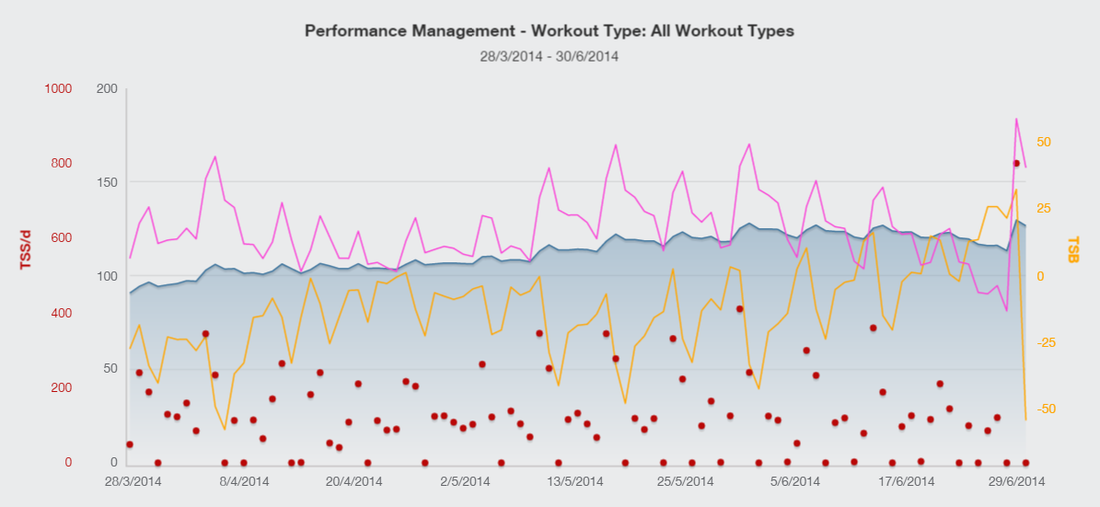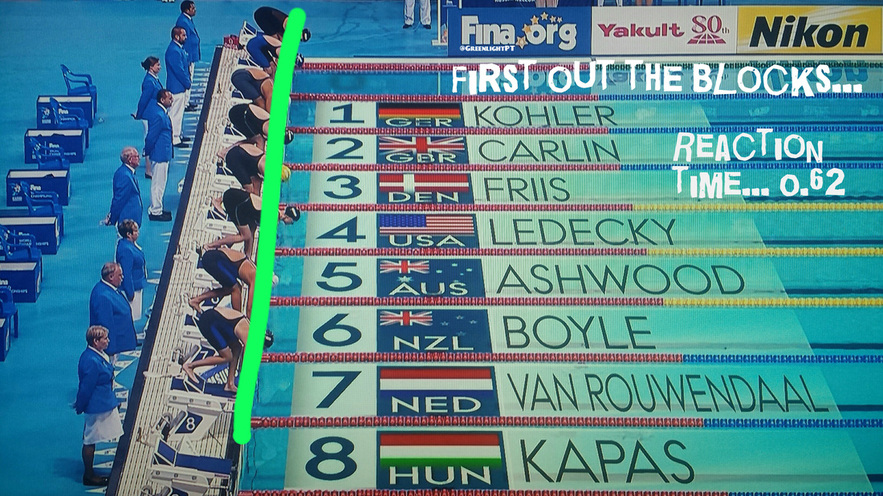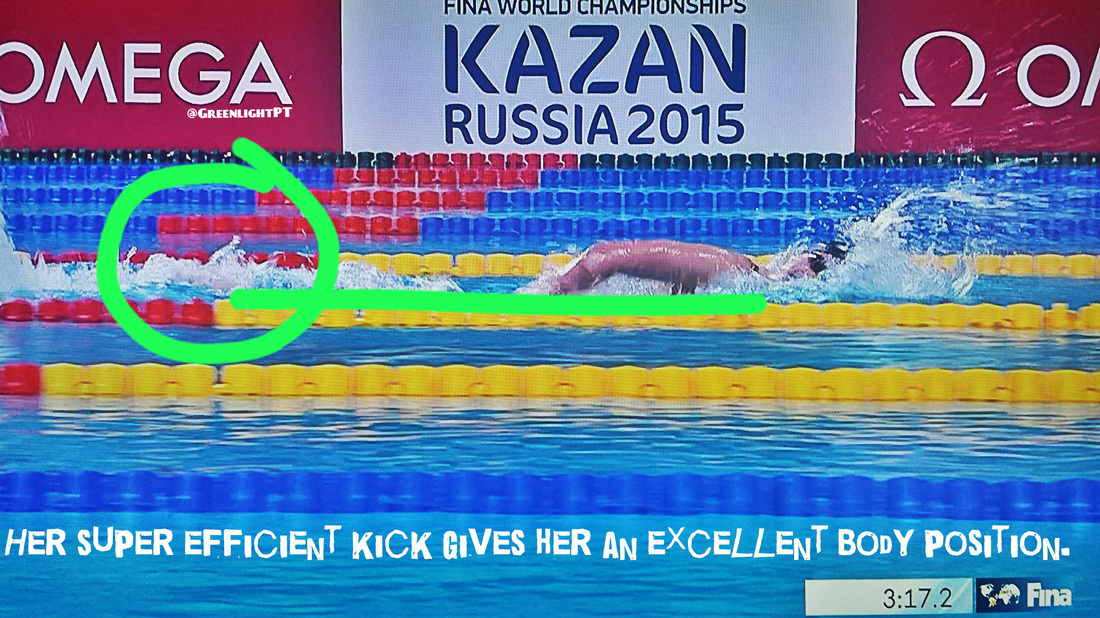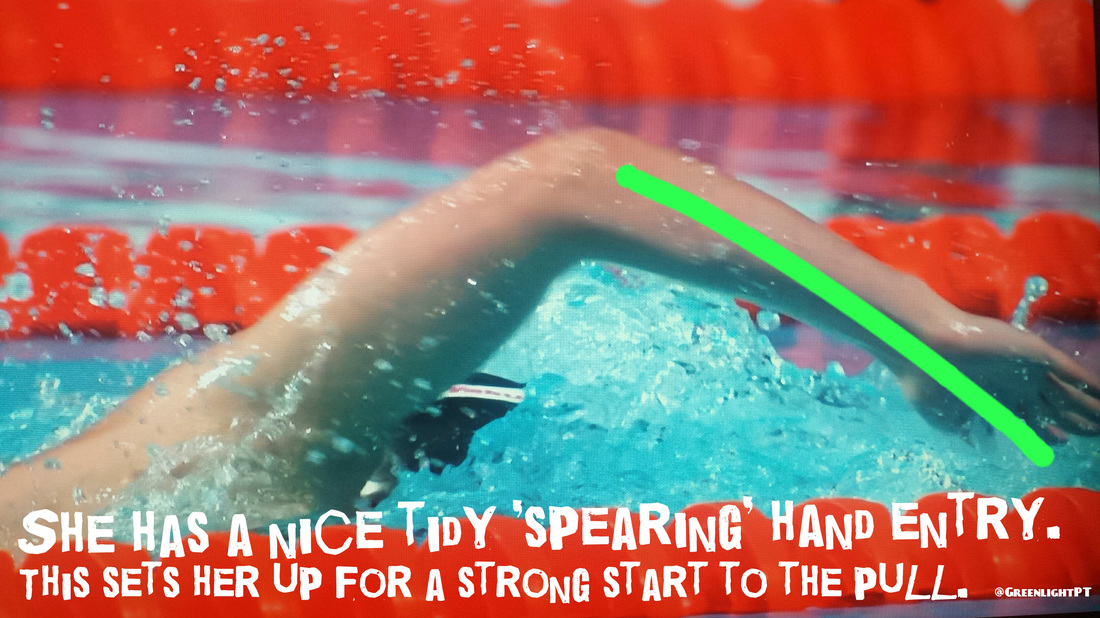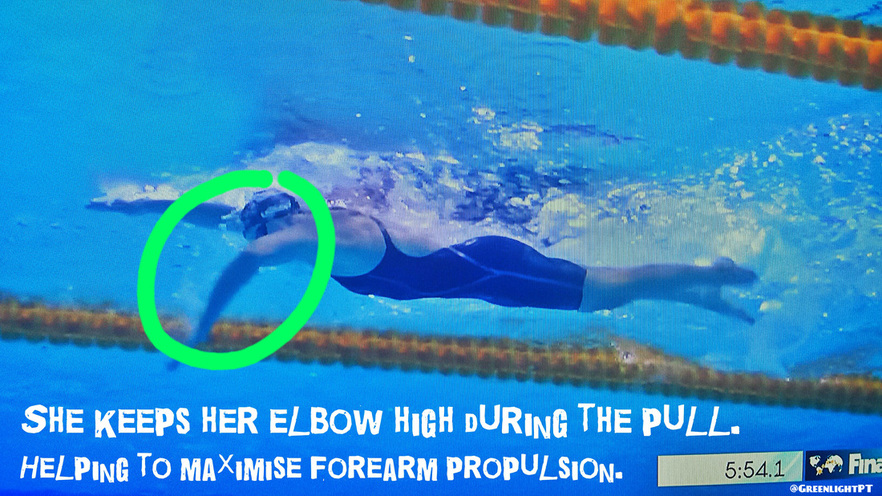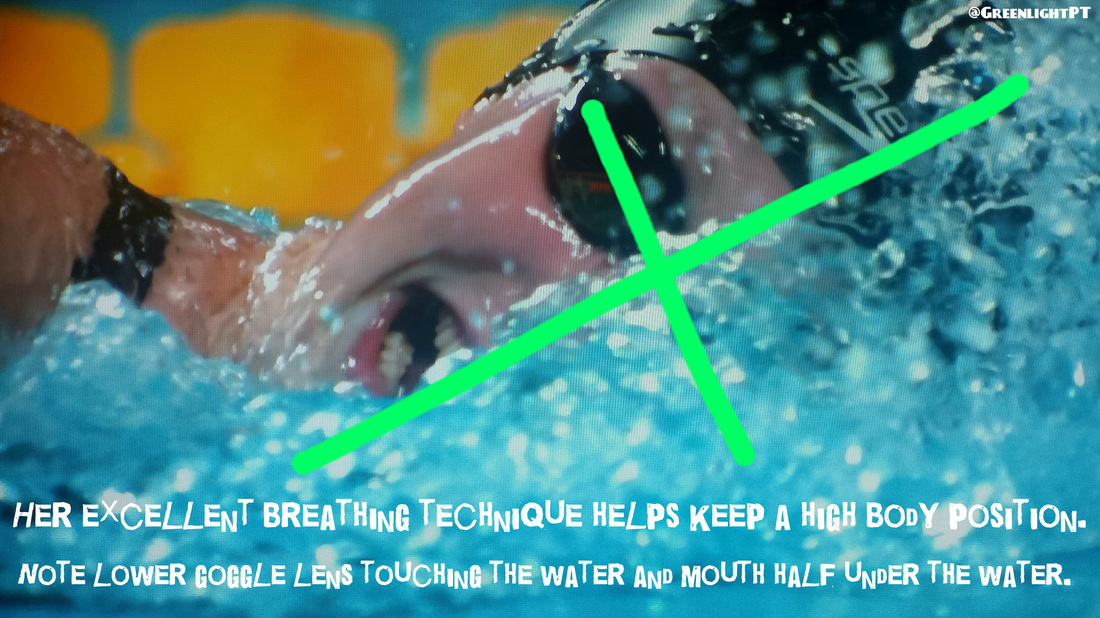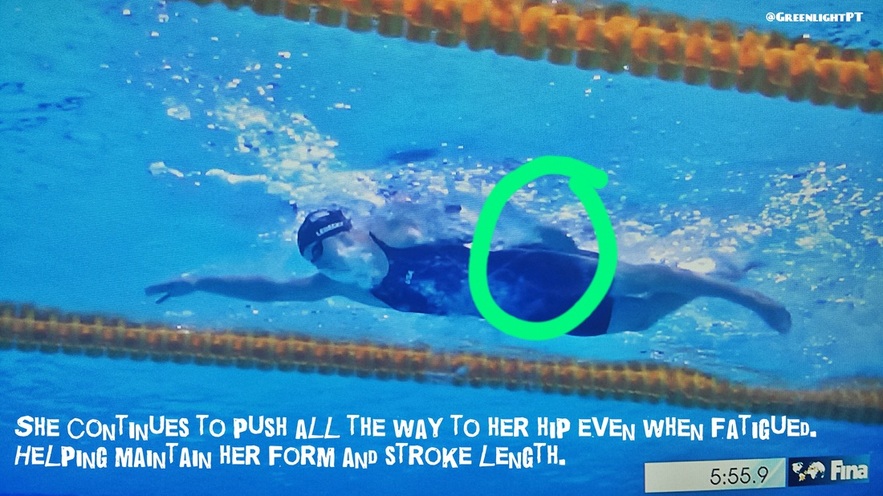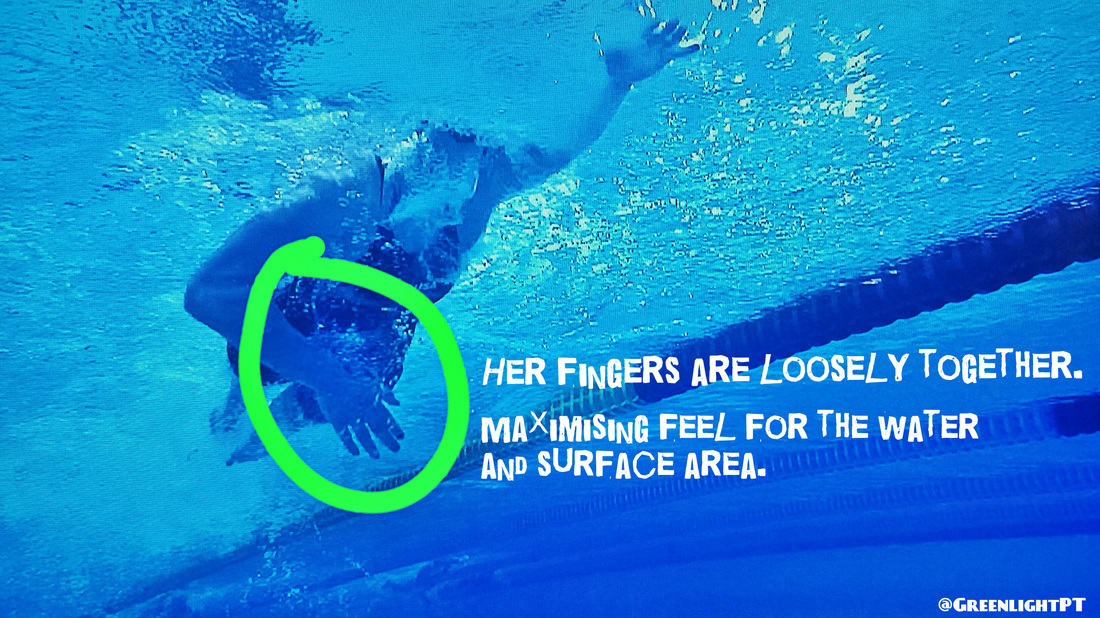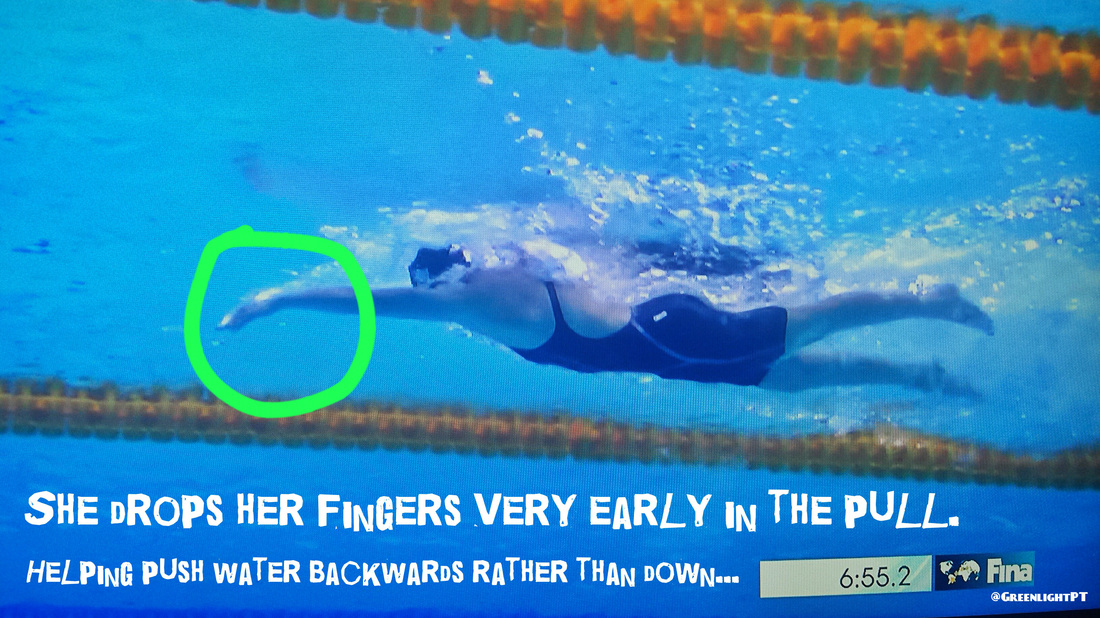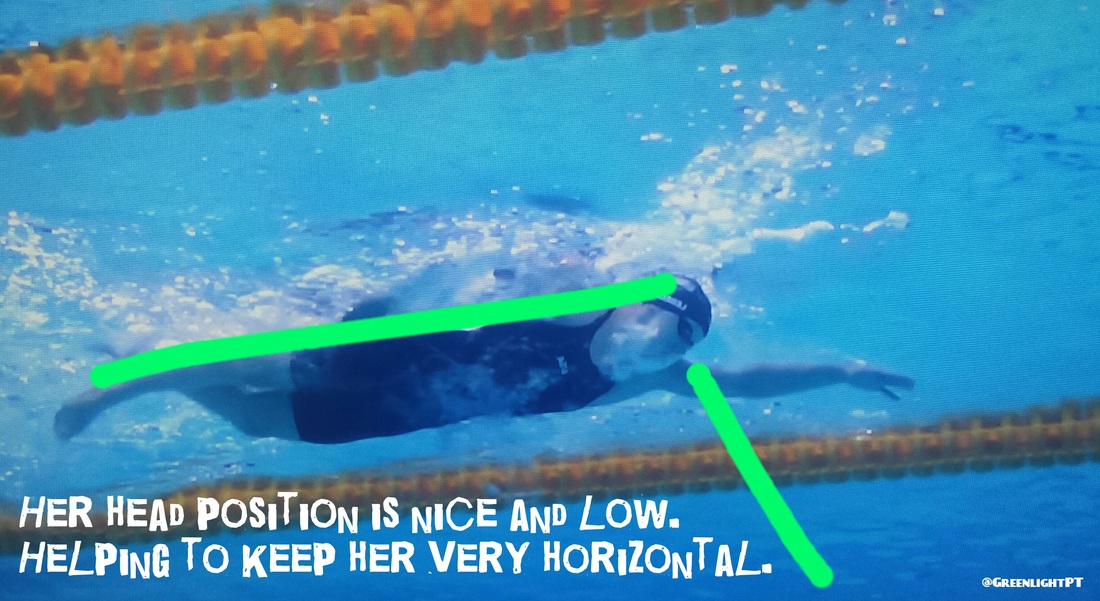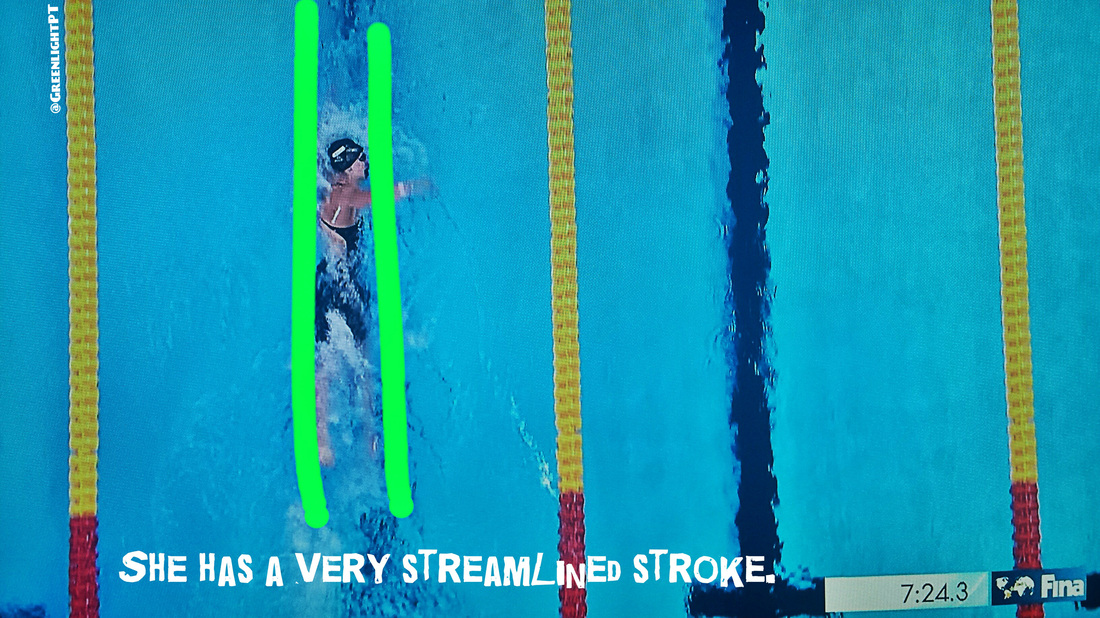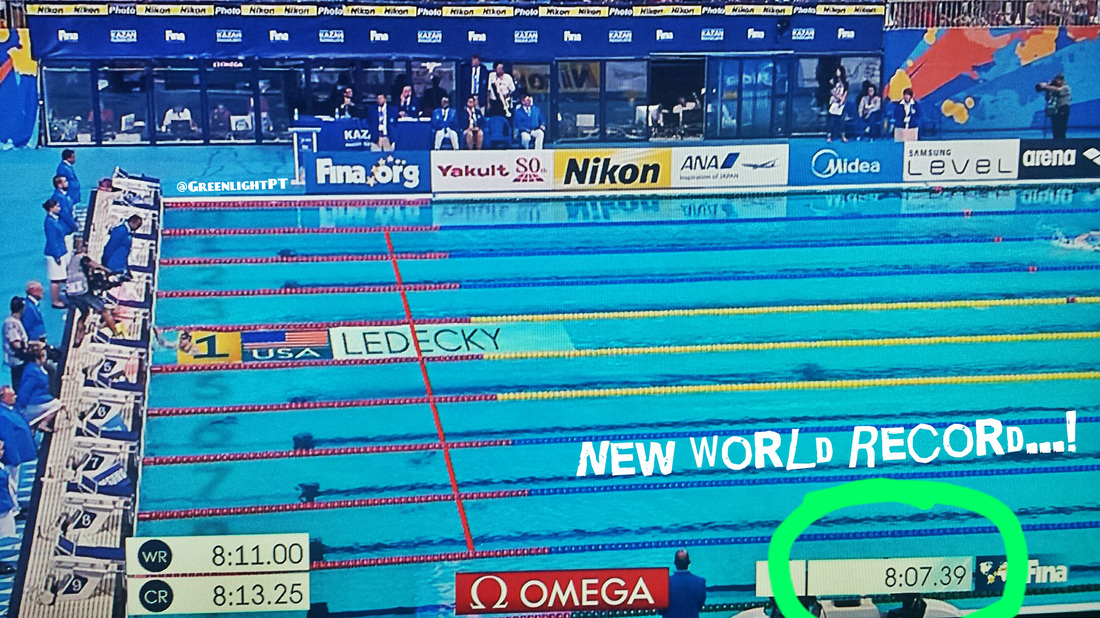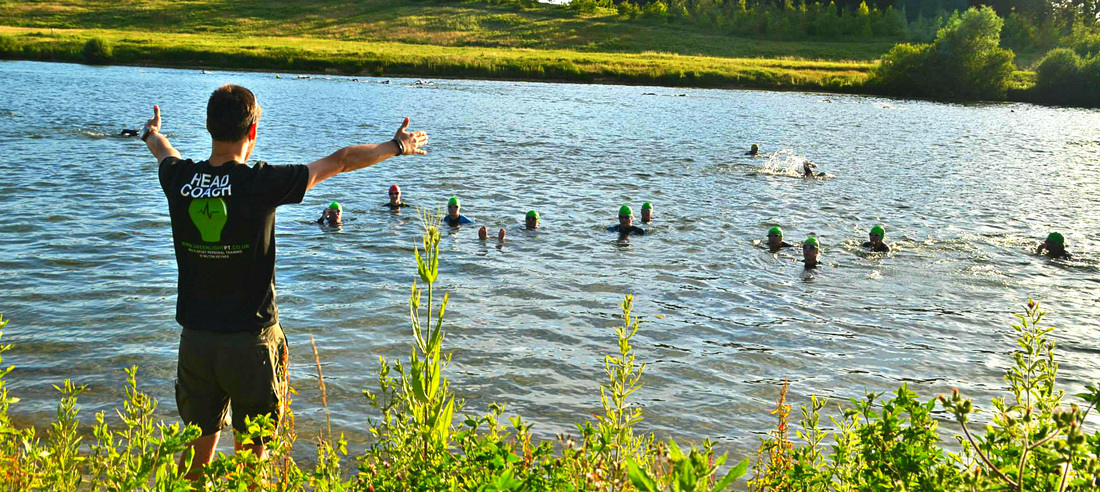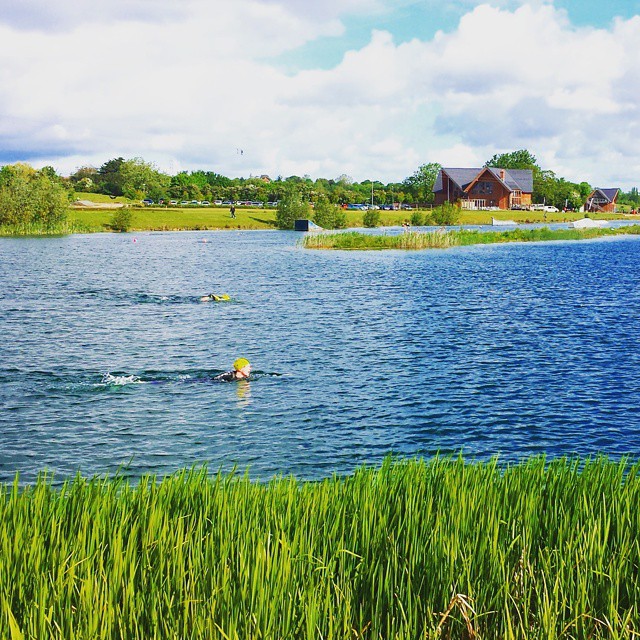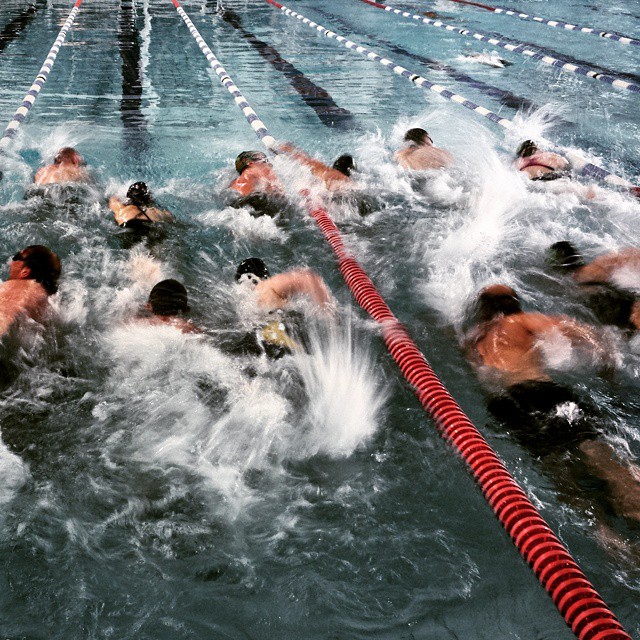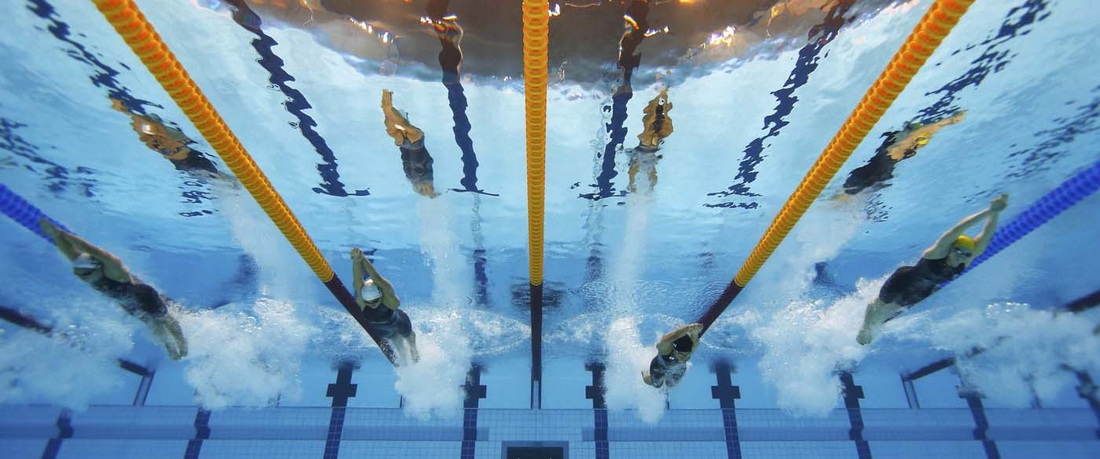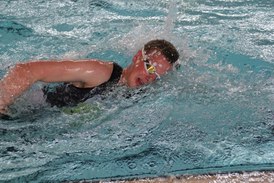What is this?
A challenging festive themed swim session to try over the Christmas period! You can do this by yourself or as part of a swim squad! It will take around 1 hour including your warm up!
What do I need?
...and probably some swimwear too. We'd recommend that. Nice red festive swimwear if you have some.
How do I get ready?
1. You need to know your CSS pace. If you don't know that you can find out here:
http://www.swimsmooth.com/css-calculator.html 2. Turn your Tempo Trainer onto 'Mode 1' and key in your CSS pace per (25m) length. Example: If your CSS pace per 100m is '1:56' you divide by 4 (lengths) and need to have '29:00' displayed on the Tempo Trainer Warm up:
Something like this will do. Shorten the distances if you need to...
200m - Easy Swim 200m - Side Kick With Fins (Swap sides each length) 200m - Half a length sculling into half a length easy swim 200m - Start the 200m slow and build up to a fast finish Main Set:
|
|
SUMMARY...
The above tips should help you reduce your open water panics and teach you how to cope with them should they arise! Remember... The more you practice and prepare for this, the less it will happen. Please feel free to 'share' this blog with your swimming and triathlon buddies. Adam Gibson Head Coach GreenlightPT |
|
|
There are lots of gadgets and equipment on offer to help progress your swimming these days. Some good and some not so good (next blog!). One of the best (and most under used) is the Tempo Trainer by Finis. If you've ever been in your local pool and keep hearing an annoying bleep under the water... chances are someone in the pool is using one!
We can use the Tempo Trainer to perform a variety of things. These include:
Here is how to do each of the above... |
pacing swimming correctly
Do you struggle to swim all your reps at a nice consistent pace? The Tempo Trainer can help with this! A popular set I might give people is 4 x 400m. If you had a target of swimming 8 minutes per 400m, we can set the Tempo Trainer to 'bleep' every 30 seconds (for a 25m pool). All you then have to do is swim in time with the bleeps (A bit like the dreaded Bleep Test at school!) and BINGO! You'll not only swim every rep in 8 minutes exactly, you'll also pace every single length at the correct speed. A really good way to nail your set perfectly. I also use this mode for longer swims to keep a nice even pace throughout - and also to help with counting (you know exactly how long your swim should take if you stay in time with the bleeps!)
Setting off on specific times
No pool clock? Or just rubbish at maths? The Tempo Trainer can help! If your main set was 15 x 100m setting off every 2:00, we can set the Tempo Trainer to bleep every 2 minutes - no need to look at the clock any more. We can take this a step further...! Using the pool clock you might be setting off every 2:00, if you wanted to try going a little faster you'd have to swap to 1:55 - this is quite a big jump to make! Using the Tempo Trainer we can do 15 x100m off 1:59 or 1:58 etc! So we can be super specific about what times we work too! Really useful for fine tuning your sessions.
Increasing stroke rate
Some swimmers have a nice long relaxed stroke but struggle with getting their 'stroke rate' (turnover or cadence) up. The Tempo Trainer can be used to increase this. First step, find out your current stroke rate, then programme this into the Tempo Trainer. Maybe try a few lengths swimming at your regular tempo, aim to enter each hand in time with the bleep. Next step, increase the bleep by between 3-5 beats per minute. You can then do some reps getting used to swimming with a higher stroke rate, I'd recommend something like 8 x 50m . (Don't try doing a whole session of this, its a gradual process, and I'd recommend using this method like a 'drill')
Slowing down Stroke rate
We can do exactly the opposite of the above to help slow down someone's stroke rate.This is particularly useful with beginner swimmers who thrash around too much and need to slow down and relax. To do this, follow the above steps, but decrease the stroke rate by between 5-20 strokes per minute. You can do this for a whole session if you really need to work on slowing things down.
(We can also use the same setting to help pace our open water training. Many people set off too fast with the absence of a pool clock - swimming at a set tempo ensures we go at the correct speed!)
(We can also use the same setting to help pace our open water training. Many people set off too fast with the absence of a pool clock - swimming at a set tempo ensures we go at the correct speed!)
Creating an even stroke rate
Another thing I've found the Tempo Trainer useful for is developing rhythm and timing. Lets use an example of someone that breathes every 3 strokes, but they pause quite a bit on the breath. It might look/sound a little like this...
'1,2, Breeeeeeeeeeeeeeeeeeeeeeeeeeeeeathe, 1,2 Breeeeeeeeeeeeeeeeeeeeeeeeeeeeeathe'
When ideally we want an even stroke rate like this...
'1,2,B,1,2,B,1,2,B'
Using the Tempo Trainer on your regular stroke rate speed but aiming to keep hand entry in time with the bleeps will correct this issue and bring good timing into your stroke!
'1,2, Breeeeeeeeeeeeeeeeeeeeeeeeeeeeeathe, 1,2 Breeeeeeeeeeeeeeeeeeeeeeeeeeeeeathe'
When ideally we want an even stroke rate like this...
'1,2,B,1,2,B,1,2,B'
Using the Tempo Trainer on your regular stroke rate speed but aiming to keep hand entry in time with the bleeps will correct this issue and bring good timing into your stroke!
Hopefully that gives you some ideas of what you can use a Tempo Trainer for!
As a swimming and triathlon coach I am finding myself giving more and more swimmers reasons to use one in their training!
So if you are looking for the next gadget to add to your swim bag... this is probably it!
Drop any questions on the comments below and I'll try respond ASAP :)
Adam Gibson
Head Coach
GreenlightPT
You can buy a Tempo Trainer here:
As a swimming and triathlon coach I am finding myself giving more and more swimmers reasons to use one in their training!
So if you are looking for the next gadget to add to your swim bag... this is probably it!
Drop any questions on the comments below and I'll try respond ASAP :)
Adam Gibson
Head Coach
GreenlightPT
You can buy a Tempo Trainer here:
Stuck for present ideas for the triathlete that has everything?! Or simply want to treat yourself to something nice?!
Here is a list of ideas including the latest triathlon gadgets, some old classics and some things you may not have thought of!
I've split the list into 'Main Presents' and 'Stocking Fillers' - purely based off of the prices. Pictures and links are on the left if you want to treat someone!
Have a great 2014 Christmas and I hope Santa brings you everything you need for the 2015 triathlon season!
Here is a list of ideas including the latest triathlon gadgets, some old classics and some things you may not have thought of!
I've split the list into 'Main Presents' and 'Stocking Fillers' - purely based off of the prices. Pictures and links are on the left if you want to treat someone!
Have a great 2014 Christmas and I hope Santa brings you everything you need for the 2015 triathlon season!
Main Presents
| | Garmin 920XT The very latest GPS watch from Garmin. It features GPS for cycling, running, pool swimming and open water. It is the first watch of its kind to have a colour screen, offering great live stats and graphs on screen as you swim, bike, run. Ideal for the triathlete that loves numbers and data (all of them?!). Available in 2 choices of colours. Check out HERE for a more in depth review from DC Rainmaker. Price from: £419.99 |
| | Suunto Ambit3 Similar to the 920XT this is Suunto's most up to date GPS watch. It doesn't have the colour screen that the 920XT has, but it has an excellent Heart Rate Monitor that works in the water as you are swimming. This is great to ensure you are swimming at the correct intensities. It offers all the other things you'd expect from a watch of this price range including GPS, live stats for pace, distance and time. Plus it looks much smarter than most other GPS watches! Price from: £267.00 |
| | Finis Tempo Trainer A great training tool for the swimming pool! The tempo trainer is a 'wetronome' that makes an audible beep in your cap as you swim. This can be used for a number of reasons. You can use it to time your stroke rate, great if you need to speed up or slow down your strokes per minute. You can also set it to beep per length, so you could ensure you are pacing your intervals of time trials perfectly in the pool - often something people struggle with! Price from: £31.50 |
| | SWIMMING CORDS These are perfect for when you can't quite make it to the pool, or if you want to supplement your swimming training with some strength work. This kit comes with various resistances, a set of handles, a door stop attachment and a little bag to keep it all inside. Check out our article HERE on 'Land Training for Swimming' for some ideas on how you could be using these in your training sessions. Price from: £13.47 |
| | TRX Suspension Training Kit If you want to improve strength, core and balance then suspension fitness is perfect. You can do it in your home or outside and every exercise you do on a gym machine can be replicated using one simple piece of kit. I regularly use it with clients to work on core and strength. Cheaper versions are available, but if you are going to be hanging face down a few inches from the floor I'd opt for the well known brands! They are TRX and Rip60. Price from: £198.99 |
| | The Complete book of triathlon training A great book by Mark Kleanthous. It covers lots you would like to know about triathlon in a simple and easy to understand format. There will be useful tips for complete beginners and experienced athletes alike. I have lost count of how many Ironman races Mark has done... but if you ask him I am sure he will tell you!!! Price from: £14.39 |
| | Yurbuds In-Ear Headphones These have revolutionised headphones. Made specifically for athletes, they are completely sweat resistant. This means they should never fall out when running. They are comfortable and light weight and available in many different colours. Anyone who has tried running with earphones that fall out will know how annoying it can be...! Fix it forever with these! Price from: £22.50 |
| | Tacx Blue Motion Turbo Trainer When the dark nights, cold weather, sleet, fog, ice and snow come along... this is exactly what you need! Attaching your current bike to a turbo trainer allows you to train safely and warmly (maybe too warmly!) inside your home or garage. Come spring time it will become clear who worked hard over the winter on a turbo and who didn't! You can also join in with our free session HERE Price from: £119.95 |
Stocking Fillers
| | Elastic Laces Elastic laces are great for speeding up transition between bike and run. They can also be really useful for long run training, as your feet will swell up in size the longer you run, elastic laces will give much more comfort. Available in lots of colours so no excuses for them not match your trainers and triathlon kit. We recommend green and black obviously Price from: £5.50 |
| | Race Number Belt Simple but essential bit of kit for triathlon. Have your number attached and ready for when you get out the swim. There are lots of different versions of race belts, if you are doing long distances make sure you look for one which can hold a few gels too. Price from: £6.89 |
| | Goggle Anti-fog Its 2014... why we still don't have goggles that don't steam up is beyond me! However there is hope... anti-fog! Most goggles are great for a few months, then the fog comes! While this is sometimes great for ignoring the rancid lake you are swimming in, ideally we want to be able to see where we are going. This will prolong the life of your goggles and stop you swimming 5km on your next Ironman race. Price from: £7.11 |
| | VeloChampion 'Gooj' Multi Tool The 'GOOJ' tool has got everything you will need to help you get going again. This compact, well designed Maxgear tool combines quality materials with maximum features including a chain breaker. Buying your partner this could save you from a 50km drive to pick them up when they have a mechanical. So think of it as a present for yourself! Price from: £12.99 |
With almost 2 million people per week running to keep fit, its not surprising to see a few mistakes in people's training along the way. In this blog I aim to highlight a few common mistakes I see people making in training, racing and planning. Please bare in mind that these are aimed for 'club runners' who are aiming to improve their PBs and perform well at certain races.
1. Trying to return from injury too early
Probably the most common mistake I see on social media. Far too many runners take a tiny amount of time off with an injury, then head out to 'test' it and of course set themselves back even more time. Ensure you take as much rest as needed so that the injury is completely healed, and when you do return, make sure you don't jump straight back in at the same distances your were running before. Build back up.
2. Racing to often
Everyone loves to race, and lets face it, it's why lots of us take part in running. But racing every single weekend isn't good for a few reasons. Often it can be far too much stress on the body , even if you have all intentions of not going 'full gas'. Your best option is to pick a few 'A' races, and train towards that rather than doing races that don't fit with your goal. You can have some shorter races in the build up - just not every single weekend.
3. Long training runs too fast
The goal of a long run in training is very simple... build endurance and aerobic fitness. That is all this run is for. You should be able to talk throughout. Some of the issues with going too fast on your long run include:
4. Short speed work intervals too slow
One of my biggest pet hates in club interval sessions. I'll try to put this simply and nicely...
If we are training to run 5km fast, and we have an interval sessions that add up to less than 5km (5 x 800m for example)...IT NEEDS TO BE FASTER THAN 5KM PACE! Not 'at 5km pace' or 'around 5km pace'.
We can already run 5km at that pace, so running it broken up with rests between each rep - it should be faster!
There is an exception to this once the reps become longer than 1 mile, or if training for distances above 10km.
1. Trying to return from injury too early
Probably the most common mistake I see on social media. Far too many runners take a tiny amount of time off with an injury, then head out to 'test' it and of course set themselves back even more time. Ensure you take as much rest as needed so that the injury is completely healed, and when you do return, make sure you don't jump straight back in at the same distances your were running before. Build back up.
2. Racing to often
Everyone loves to race, and lets face it, it's why lots of us take part in running. But racing every single weekend isn't good for a few reasons. Often it can be far too much stress on the body , even if you have all intentions of not going 'full gas'. Your best option is to pick a few 'A' races, and train towards that rather than doing races that don't fit with your goal. You can have some shorter races in the build up - just not every single weekend.
3. Long training runs too fast
The goal of a long run in training is very simple... build endurance and aerobic fitness. That is all this run is for. You should be able to talk throughout. Some of the issues with going too fast on your long run include:
- Higher injury risk
- Lack of energy for shorter/fast sessions in the following days
- Training the wrong 'energy system' - you need to be building aerobic fitness.
4. Short speed work intervals too slow
One of my biggest pet hates in club interval sessions. I'll try to put this simply and nicely...
If we are training to run 5km fast, and we have an interval sessions that add up to less than 5km (5 x 800m for example)...IT NEEDS TO BE FASTER THAN 5KM PACE! Not 'at 5km pace' or 'around 5km pace'.
We can already run 5km at that pace, so running it broken up with rests between each rep - it should be faster!
There is an exception to this once the reps become longer than 1 mile, or if training for distances above 10km.
5. Too much stretching pre-race/run
It's pretty well established now that static stretching (the kind where you hold a position at the edge of your range of motion for 15 to 60 seconds, as opposed to bouncing around in "dynamic" stretches) has a dampening effect on strength and power. Its also an unneeded risk. You are far better warming up using mobility and dynamic stretching.
Mobility & Dynamic Stretching involves moving parts of your body and gradually increasing reach, speed of movement, or both. Think 'high knees' and 'heel flicks', ankle rotations and swinging your arms around!
6. Ending training runs with a fast finish
This is a little similar to point 3. Remember your goal for each training session. If it's a long run or tempo run - it's supposed to be just that. All you are doing by running your last km or mile faster is adding fatigue that is going to effect your speed training in the coming days and increase your risk of injury.
7. Increasing distance too quick
This is quite common with new runners who are keen to jump up to longer distances, and also with old school runners returning from a break or injury. As a general rule your longest run of the week shouldn't progress by more than 10%. So if you are training for a marathon and you've ran 20km so far, the following week should be 22km max. Increasing much quicker than this gives you a much higher chance of getting injured.
It's pretty well established now that static stretching (the kind where you hold a position at the edge of your range of motion for 15 to 60 seconds, as opposed to bouncing around in "dynamic" stretches) has a dampening effect on strength and power. Its also an unneeded risk. You are far better warming up using mobility and dynamic stretching.
Mobility & Dynamic Stretching involves moving parts of your body and gradually increasing reach, speed of movement, or both. Think 'high knees' and 'heel flicks', ankle rotations and swinging your arms around!
6. Ending training runs with a fast finish
This is a little similar to point 3. Remember your goal for each training session. If it's a long run or tempo run - it's supposed to be just that. All you are doing by running your last km or mile faster is adding fatigue that is going to effect your speed training in the coming days and increase your risk of injury.
7. Increasing distance too quick
This is quite common with new runners who are keen to jump up to longer distances, and also with old school runners returning from a break or injury. As a general rule your longest run of the week shouldn't progress by more than 10%. So if you are training for a marathon and you've ran 20km so far, the following week should be 22km max. Increasing much quicker than this gives you a much higher chance of getting injured.
8. Lack of focus on a specific distance
Everyone must know someone who is training for a marathon but still insists on trying to smash a parkrun PB each week. Try to have a clear idea of which distance you are trying to be good at, and focus your training on this. Save parkrun for your rest weeks, after your main event, or incorporate it as part of your long run if you REALLY must do it. Even top athletes will focus on 5/10km OR Half/Full Marathon. You should do the same.
9. Over-training
Know someone who trains like a monster but never performs on race day? Chances are they are over-training. This can either be too much intensity, too much distance or not enough rest. If you find you are one of these people make sure your long runs are slow enough, your intervals are consistent (not fading each rep) and that you are following the next point...
10. Lack of 'recovery' or periodisation
No one can keep on training hard week after week after week. You need to give yourself time to adapt to your training and recover ready for the next block of hard work. Athletes should work hard for 2/3/4 weeks and then take a 'recovery' week, where intensity will be slightly reduced, and you'll be re-focused ready for the next 2/3/4 weeks training. This also reduces chances of injury and helps with motivation.
Everyone must know someone who is training for a marathon but still insists on trying to smash a parkrun PB each week. Try to have a clear idea of which distance you are trying to be good at, and focus your training on this. Save parkrun for your rest weeks, after your main event, or incorporate it as part of your long run if you REALLY must do it. Even top athletes will focus on 5/10km OR Half/Full Marathon. You should do the same.
9. Over-training
Know someone who trains like a monster but never performs on race day? Chances are they are over-training. This can either be too much intensity, too much distance or not enough rest. If you find you are one of these people make sure your long runs are slow enough, your intervals are consistent (not fading each rep) and that you are following the next point...
10. Lack of 'recovery' or periodisation
No one can keep on training hard week after week after week. You need to give yourself time to adapt to your training and recover ready for the next block of hard work. Athletes should work hard for 2/3/4 weeks and then take a 'recovery' week, where intensity will be slightly reduced, and you'll be re-focused ready for the next 2/3/4 weeks training. This also reduces chances of injury and helps with motivation.
Every 6 weeks I like to test the swim squad over 400m. There are a few reason for this:
How much should a swimmer be improving?
To be honest its impossible to put a benchmark figure out there, people improve for all kinds of reasons. What I hope is that the figures below give you a good idea of what is possible. Its goes without saying that the slower swimmers will obviously knock off bigger chunks of time, but its also worth noting that this is also true when we look at % improvement.
The Results from 5/2/2014: (Without names!)
12:59 (12:55 6 weeks ago)
12:39 (18:00 6 weeks ago)
12:23 (13:24 6 weeks ago)
12:12 (17:10 6 weeks ago)
11:39 (12:40 18 weeks ago)
11:17 (14:27 6 weeks ago)
10:40 (14:55 18 weeks ago)
10:39 (10:45 (18 weeks ago)
10:11 (11:04 6 weeks ago)
9:23 (8:59 6 weeks ago)
9:07 (8:55 6 weeks ago)
8:33 (8:31 6 weeks ago)
8:24 (9:00 12 weeks ago)
7:52 (8:08 6 weeks ago)
7:52 (8:22 12 weeks ago)
7:48 (7:50 6 weeks ago)
7:40 (7:48 6 weeks ago)
7:17 (7:30 12 weeks ago)
7:17 (7:48 18 weeks ago)
7:15 (8:10 6 weeks ago)
7:11 (7:02 6 weeks ago)
7:04 (7:30 6 weeks ago)
6:40 (6:55 6 weeks ago)
6:33 (6:51 12 weeks ago)
6:24 (6:15 12 weeks ago)
6:24 (6:21 6 weeks ago)
5:47 (5:54 6 weeks ago)
So that means:
20 ' Improvers'
7 'Non- Improvers'
6 'First Timers' (Didn't bother factoring these in to the stats)
What can we learn?
The 'Non Improvers' are all actually pretty close to their 'PB' from last time, so not a disaster, but the 'improvers' have knocked some considerable chucks of time off. The most notable improvements:
12:39 (18:00 6 weeks ago)
12:12 (17:10 6 weeks ago)
11:17 (14:27 6 weeks ago)
7:15 (8:10 6 weeks ago)
7:04 (7:30 6 weeks ago)
6:33 (6:51 12 weeks ago)
Why might a swimmer NOT have improved?
How many times has the swimmer been training outside of our group sessions? (We have 1 per week)
The swimmer needs to be swimming at least 2 or 3 times per week to get a decent improvement.
Is the swimmer ill, over-trained or feeling fatigued?
Any one of these will effect the swimmers times. PBs don't happen every day. You need to be feeling good on the day to hit them, especially when you get to the quicker end of the times.
Are the swimmers training at the correct speed?
Quite often swimmers can be swimming too slow or too fast in training. There is a fine balance when hitting the right training speed. Its explained very well here by Swim Smooth: http://www.swimsmooth.com/training.html
Are there any patterns in our 'Non Improvers'?
Yes!...
Two of them complained of feeling fatigued/tired before the test started. This will probably account for the small amount of time that they missed their PB by.
Also, ALL of the 'Non Improvers' are swimmers that are swimming at the back of their training lane. This means they are possibly training at a pace that is slightly too fast for them. This can lead to going 'anaerobic' and also to scrappy messy technique. It may feel to the swimmer that they have worked very hard (they have!), but actually the training is not at an ideal pace.
So what can we learn?
Well most importantly... your hard training is working. Some MASSIVE improvements across the squad. It is possible that some people are swimming in the wrong lanes....and this could be effect swimmers improvements. So don't be suprised if in the next few weeks you have all been moved around a bit. Its to maximize everybody's improvements!
Overall I am amazed by some of the improvements over the past 6 weeks! Lets hope for the same again next time!
Until next time...!
Adam Gibson
Head Coach
GreenlightPT
- Make sure swimmers are seeded into the correct lanes during training.
- Let people know (hopefully!!) that they are making some progress.
- Check who is improving, who isn't, and most importantly... why!
How much should a swimmer be improving?
To be honest its impossible to put a benchmark figure out there, people improve for all kinds of reasons. What I hope is that the figures below give you a good idea of what is possible. Its goes without saying that the slower swimmers will obviously knock off bigger chunks of time, but its also worth noting that this is also true when we look at % improvement.
The Results from 5/2/2014: (Without names!)
12:59 (12:55 6 weeks ago)
12:39 (18:00 6 weeks ago)
12:23 (13:24 6 weeks ago)
12:12 (17:10 6 weeks ago)
11:39 (12:40 18 weeks ago)
11:17 (14:27 6 weeks ago)
10:40 (14:55 18 weeks ago)
10:39 (10:45 (18 weeks ago)
10:11 (11:04 6 weeks ago)
9:23 (8:59 6 weeks ago)
9:07 (8:55 6 weeks ago)
8:33 (8:31 6 weeks ago)
8:24 (9:00 12 weeks ago)
7:52 (8:08 6 weeks ago)
7:52 (8:22 12 weeks ago)
7:48 (7:50 6 weeks ago)
7:40 (7:48 6 weeks ago)
7:17 (7:30 12 weeks ago)
7:17 (7:48 18 weeks ago)
7:15 (8:10 6 weeks ago)
7:11 (7:02 6 weeks ago)
7:04 (7:30 6 weeks ago)
6:40 (6:55 6 weeks ago)
6:33 (6:51 12 weeks ago)
6:24 (6:15 12 weeks ago)
6:24 (6:21 6 weeks ago)
5:47 (5:54 6 weeks ago)
So that means:
20 ' Improvers'
7 'Non- Improvers'
6 'First Timers' (Didn't bother factoring these in to the stats)
What can we learn?
The 'Non Improvers' are all actually pretty close to their 'PB' from last time, so not a disaster, but the 'improvers' have knocked some considerable chucks of time off. The most notable improvements:
12:39 (18:00 6 weeks ago)
12:12 (17:10 6 weeks ago)
11:17 (14:27 6 weeks ago)
7:15 (8:10 6 weeks ago)
7:04 (7:30 6 weeks ago)
6:33 (6:51 12 weeks ago)
Why might a swimmer NOT have improved?
How many times has the swimmer been training outside of our group sessions? (We have 1 per week)
The swimmer needs to be swimming at least 2 or 3 times per week to get a decent improvement.
Is the swimmer ill, over-trained or feeling fatigued?
Any one of these will effect the swimmers times. PBs don't happen every day. You need to be feeling good on the day to hit them, especially when you get to the quicker end of the times.
Are the swimmers training at the correct speed?
Quite often swimmers can be swimming too slow or too fast in training. There is a fine balance when hitting the right training speed. Its explained very well here by Swim Smooth: http://www.swimsmooth.com/training.html
Are there any patterns in our 'Non Improvers'?
Yes!...
Two of them complained of feeling fatigued/tired before the test started. This will probably account for the small amount of time that they missed their PB by.
Also, ALL of the 'Non Improvers' are swimmers that are swimming at the back of their training lane. This means they are possibly training at a pace that is slightly too fast for them. This can lead to going 'anaerobic' and also to scrappy messy technique. It may feel to the swimmer that they have worked very hard (they have!), but actually the training is not at an ideal pace.
So what can we learn?
Well most importantly... your hard training is working. Some MASSIVE improvements across the squad. It is possible that some people are swimming in the wrong lanes....and this could be effect swimmers improvements. So don't be suprised if in the next few weeks you have all been moved around a bit. Its to maximize everybody's improvements!
Overall I am amazed by some of the improvements over the past 6 weeks! Lets hope for the same again next time!
Until next time...!
Adam Gibson
Head Coach
GreenlightPT
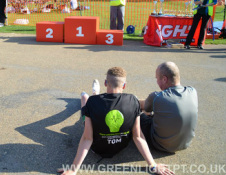
If I had a pound for every time a triathlete asked me how they can improve their swim... I'd probably be able to afford my own swimming pool. (One day ...eh!)
So...if you want to know how to knock a hefty 20% off your swim time (potentially more) keep on reading. If you want to continue plodding up and down the pool quite aimlessly - then this is probably your exit point.
So, how hard can it be? You are in reasonable shape (hopefully!?) and you have confidence in the water, why can't you swim like you can run and bike? The answer is actually a very simple one.
Run lots and you will inevitably get faster. Structure your run sessions and you'll improve even more. Same goes for cycling. But swimming is a completely different beast. It's all about your technique.
One late summer's evening in August 2012 I was competing at Box End Evening series triathlon. I exited the water comfortably in 1st place, with a 40 second lead. I'm overtaken a little while later by a young Tom Stead. Tom came past at a completely different speed and went on to win the race by almost a clear minute. My thoughts...imagine what this boy is capable off if he improves his swim!
Despite Tom being a reasonably good swimmer to start with, the reasons why he improved so much in one year translate to every level of swimmer.
The 4 steps to improving...
First step.
Find your current level. Time yourself over 400m but if you can't manage that time yourself over 100m. Still struggling...okay 25m will do. Time isn't important here, everyone starts somewhere. This is a base reading so we can measure the awesomeness of your improvements.
October 2012 -Tom's 400m = 6:40
Second Step. Get a coach to assess your swimming, not just anyone, your mum/dad/know it all friend will not do here. You need to know exactly what YOU personally are doing wrong. This will vary massively person to person and won't be picked up in a group session. You may think in your head you are swimming along like Michael Phelps, in reality you might look like a drowning moose, but hey, its a starting point right. Your stroke issues will be unique to YOU. When I assess someone I like to give them the 3 most important issues to work on, we can address the next 3 issues when the first 3 are fixed! (keep it simple here guys!)
Few things I immediately picked up for Tom to improve: Head position too low, slight scissor kick, elbow dropping during pull. So... no drowning moose, but plenty to work on.
Third Step. Get a structured training programme that is specific to your swim stroke issues and your current swim level (we just figured both these in step one and two! Told you this was simple).
Fourth Step. (The easy part I think!?) Bust your ass training in the pool 3/4/5/6 times per week. Make an effort to actually correct the stroke issues, this is key. The people that correct the stroke issues are ALWAYS the people that knock off the most time. Continue your aimless plodding and you will continue to plod. Coached sessions with similar ability swimmers is your ideal environment.
Practice doesn't make perfect...PERFECT PRACTICE MAKES PERFECT.
Repeat as necessary (Re-assess every 6-8 weeks ideally)
Need convincing some more?!
Snap shot of Tom's 400m times since we started this process:
October 2012 = 6:40
November 2012 = 6:04
February 2013 = 5:45
April 2013 = 5:27
July 2013 = 5:19
October 2013 -Tom's 400m = 5:15
Next Stop....5:00
Someone who has a slower 400m time than the above (most people!) should expect to improve even quicker than Tom with the right kind of coaching and training.
Its also important to note that any improvement over 400m soon adds up when you factor in the distance of your race. For example 1 minute improvement over 400m could easily translate to over 10 minutes if you are racing Ironman distance.
So...if you want to know how to knock a hefty 20% off your swim time (potentially more) keep on reading. If you want to continue plodding up and down the pool quite aimlessly - then this is probably your exit point.
So, how hard can it be? You are in reasonable shape (hopefully!?) and you have confidence in the water, why can't you swim like you can run and bike? The answer is actually a very simple one.
Run lots and you will inevitably get faster. Structure your run sessions and you'll improve even more. Same goes for cycling. But swimming is a completely different beast. It's all about your technique.
One late summer's evening in August 2012 I was competing at Box End Evening series triathlon. I exited the water comfortably in 1st place, with a 40 second lead. I'm overtaken a little while later by a young Tom Stead. Tom came past at a completely different speed and went on to win the race by almost a clear minute. My thoughts...imagine what this boy is capable off if he improves his swim!
Despite Tom being a reasonably good swimmer to start with, the reasons why he improved so much in one year translate to every level of swimmer.
The 4 steps to improving...
First step.
Find your current level. Time yourself over 400m but if you can't manage that time yourself over 100m. Still struggling...okay 25m will do. Time isn't important here, everyone starts somewhere. This is a base reading so we can measure the awesomeness of your improvements.
October 2012 -Tom's 400m = 6:40
Second Step. Get a coach to assess your swimming, not just anyone, your mum/dad/know it all friend will not do here. You need to know exactly what YOU personally are doing wrong. This will vary massively person to person and won't be picked up in a group session. You may think in your head you are swimming along like Michael Phelps, in reality you might look like a drowning moose, but hey, its a starting point right. Your stroke issues will be unique to YOU. When I assess someone I like to give them the 3 most important issues to work on, we can address the next 3 issues when the first 3 are fixed! (keep it simple here guys!)
Few things I immediately picked up for Tom to improve: Head position too low, slight scissor kick, elbow dropping during pull. So... no drowning moose, but plenty to work on.
Third Step. Get a structured training programme that is specific to your swim stroke issues and your current swim level (we just figured both these in step one and two! Told you this was simple).
Fourth Step. (The easy part I think!?) Bust your ass training in the pool 3/4/5/6 times per week. Make an effort to actually correct the stroke issues, this is key. The people that correct the stroke issues are ALWAYS the people that knock off the most time. Continue your aimless plodding and you will continue to plod. Coached sessions with similar ability swimmers is your ideal environment.
Practice doesn't make perfect...PERFECT PRACTICE MAKES PERFECT.
Repeat as necessary (Re-assess every 6-8 weeks ideally)
Need convincing some more?!
Snap shot of Tom's 400m times since we started this process:
October 2012 = 6:40
November 2012 = 6:04
February 2013 = 5:45
April 2013 = 5:27
July 2013 = 5:19
October 2013 -Tom's 400m = 5:15
Next Stop....5:00
Someone who has a slower 400m time than the above (most people!) should expect to improve even quicker than Tom with the right kind of coaching and training.
Its also important to note that any improvement over 400m soon adds up when you factor in the distance of your race. For example 1 minute improvement over 400m could easily translate to over 10 minutes if you are racing Ironman distance.
| If you'd like more information on this blog article feel free to message via the contact form. Details of GreenlightPT Swim Clinic can be found here. Look forward to seeing you in the front swim pack soon...! Adam Gibson - GreenlightPT |
Welcome to the new GreenlightPT website!
Lots of exciting developments at GreenlightPT HQ:
About the Website...
It features a forum to keep in touch with other GreenlightPT athletes and let everyone know what events you are signed up to! We also have a blog, lots of interesting articles coming out soon. Keep an eye on our YouTube channel for some short educational Triathlon videos! Also some athlete profiles coming very soon, a chance to find out about some of GreenlightPT's clients...from the elites to complete beginners!
New for 2014...
Coming up in 2014 we have some Open Water Group Workshops planned, also we have a very exciting package for those athletes aiming at Outlaw Half and Ironman UK 70.3! Full details coming VERY soon! To keep up to date with all things GreenlightPT follow us on Twitter and Facebook.
Introducing GreenlightPT sponsors...
Our sponsorship with HIGH5 will enable GreenlightPT clients to get products via Adam at a discounted rate! Order forms will be available by mid October, meaning you can get all your supplies in time for the long winter base training!
Tri Crazy have kindly offered to give GreenlightPT clients a further 10% off their already discounted prices. Details coming soon on how you can claim this! Ideal if you need a wetsuit for next season!
So...have a look around, make yourself at home, and get ready for an exciting 2014 with GreenlightPT
Adam
Lots of exciting developments at GreenlightPT HQ:
- New Sponsorship deal with HIGH5!
- Partnered up with Tri Crazy!
- Lots of exciting workshops and a training weekend planned for 2014!
About the Website...
It features a forum to keep in touch with other GreenlightPT athletes and let everyone know what events you are signed up to! We also have a blog, lots of interesting articles coming out soon. Keep an eye on our YouTube channel for some short educational Triathlon videos! Also some athlete profiles coming very soon, a chance to find out about some of GreenlightPT's clients...from the elites to complete beginners!
New for 2014...
Coming up in 2014 we have some Open Water Group Workshops planned, also we have a very exciting package for those athletes aiming at Outlaw Half and Ironman UK 70.3! Full details coming VERY soon! To keep up to date with all things GreenlightPT follow us on Twitter and Facebook.
Introducing GreenlightPT sponsors...
Our sponsorship with HIGH5 will enable GreenlightPT clients to get products via Adam at a discounted rate! Order forms will be available by mid October, meaning you can get all your supplies in time for the long winter base training!
Tri Crazy have kindly offered to give GreenlightPT clients a further 10% off their already discounted prices. Details coming soon on how you can claim this! Ideal if you need a wetsuit for next season!
So...have a look around, make yourself at home, and get ready for an exciting 2014 with GreenlightPT
Adam
THE BLOG
The lastest GreenlightPT news, articles and race reports.
Categories
All
Christmas
CSS
Ironman
Marathon
Motivation
Open Water
Racing
Running
Swim Clinic
Swimming
Tapering
Technique
Tempo Trainer
Tips
Training
Triathlon
Video
Winter
Found this useful?
Donate $BTC here:
Donate $BTC here:

